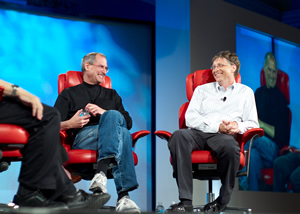If you have ever typed (sorry, tweeted) the acronyms LOL or YOLO then you are guilty as charged of language pollution. The most irritating thumbspeak below.
From the Guardian:
Thanks to the on-the-hoof style of chat-rooms and the curtailed nature of the text message and tweet, online abbreviations are now an established part of written English. The question of which is the most irritating, however, is a matter of scholarly debate. Here, by way of opening the discussion, are 10 contenders.
Linguists like to make a distinction between the denotative function of a sign – what it literally means – and the connotative, which is (roughly) what it tells you by implication. The denotative meanings of these abbreviations vary over a wide range. But pretty much all of them connote one thing, which is: “I am a douchebag.”
1) LOL
This is the daddy of them all. In the last decade it has effortlessly overtaken “The cheque’s in the post” and “I love you” as the most-often-told lie in human history. Out loud? Really? And, to complicate things, people are now saying LOL out loud, which is especially banjaxing since you can’t simultaneously say “LOL” and laugh aloud unless you can laugh through your arse. Or say “LOL” through your arse, I suppose, which makes a sort of pun because, linguistically speaking, LOL is now a form of phatic communication. See what I did there? Mega-LOL!
2) YOLO
You Only Live Once. But not for very much longer if you use this abbreviation anywhere near me when I’m holding a claw-hammer. This, as the distinguished internet scholar Matt Muir puts it, is “carpe diem for people with an IQ in double figures”. A friend of mine reports her children using this out loud. This has to end.
3) TBH
To Be Honest. We expect you to be honest, not to make some weary three-fingered gesture of reluctance at having to pony up an uncomfortable truth for an audience who probably can’t really take it. It’s out of the same drawer as “frankly” and “with respect”, and it should be returned to that drawer forthwith.
4) IMHO
In My Humble Opinion. The H in this acronym is always redundant, and the M is usually redundant too: it’s generally an opinion taken off-the-peg from people you follow on Twitter and by whom you hope to be retweeted.
5) JFGI
Just Fucking Google It. Well, charming. Glad I came to you for help. A wittier and more passive-aggressive version of this rude put-down is the website www.lmgtfy.com, which allows you to send your interlocutor a custom-made link saying “Let Me Google That For You” and doing so. My friend Stefan Magdalinski once sent me there, and I can say from first-hand experience that he’s a complete asshole.
6) tl;dr
It stands for “too long; didn’t read”. This abbreviation’s only redeeming feature is that it contains that murmuring under-butler of punctuation marks, the semicolon. On the other hand, it announces that the user is taking time out of his or her life to tell the world not that he disagrees with something, but that he’s ignorant of it. In your face, people who know stuff! In an ideal world there would be a one-character riposte that would convey that you’d stopped reading halfway through your interlocutor’s tedious five-character put-down.
Read the entire article here.

